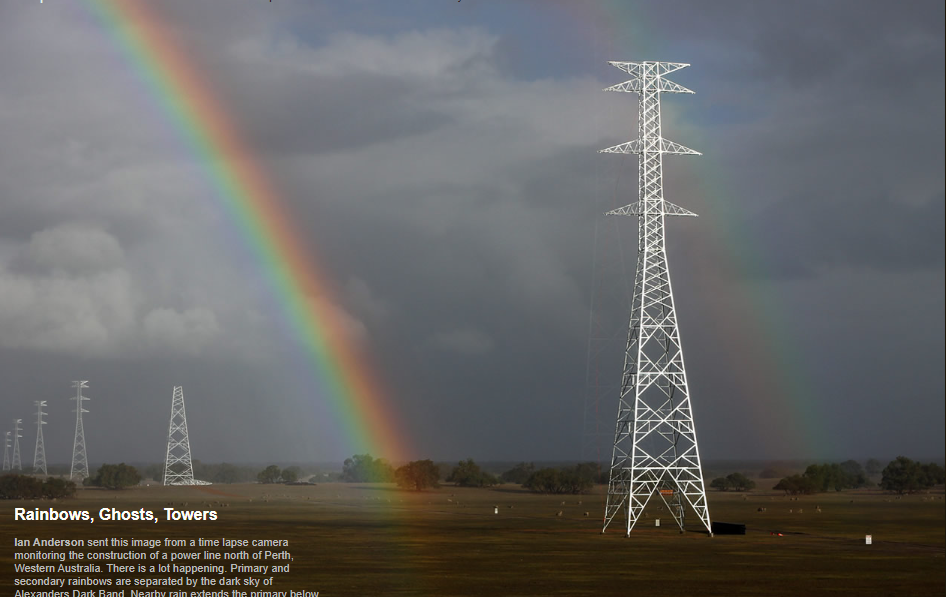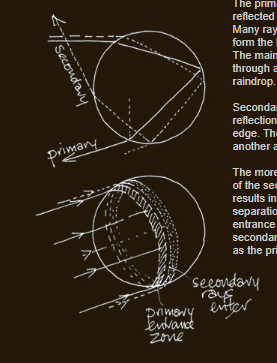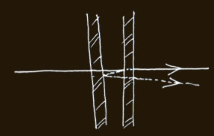Rainbows, Ghosts, Towers - OPOD
Rainbows, Ghosts, Towers - Exploring Atmospheric Optics
Have you ever looked up at the sky and been captivated by the vibrant colors of a rainbow? Or perhaps you've witnessed a ghostly apparition appearing alongside a tower? These fascinating phenomena are part of the world of atmospheric optics, where light interacts with the atmosphere to create mesmerizing visual effects. In this article, we will delve into the science behind rainbows, ghosts, and towers, shedding light on the intricate mechanisms that give rise to these awe-inspiring sights.
The Enchanting World of Rainbows
Rainbows have long been a symbol of beauty and wonder. They occur when sunlight interacts with raindrops in the atmosphere, resulting in the dispersion and reflection of light. While most of us are familiar with the primary rainbow, which forms a semi-circular arc with red on the outer edge and violet on the inner edge, there is also a secondary rainbow that is fainter and appears outside the primary one.
The primary rainbow is formed by light rays that undergo a single reflection inside raindrops. These rays enter through a specific ring-shaped zone on each raindrop, contributing to the formation of the brighter sky inside the bow. On the other hand, the secondary rainbow is created by light rays that undergo two internal reflections, skimming closer to the edge of the raindrop. This results in a greater angular separation of colors, making the secondary rainbow almost twice as wide as the primary one.
Unraveling the Mystery of Ghosts
Have you ever come across photographs that seemingly show multiple suns in the sky? These intriguing images are often caused by lens or filter reflections, especially when using a plane glass filter or taking a photo through a window. However, there are instances where ghostly phenomena captured in photographs can be attributed to something more extraordinary.
To determine if a ghostly image is real, it must be visible to the naked eye and consistently appear in multiple handheld camera images taken from different viewing directions. This variation in viewing direction helps reveal any lens or filter reflection effects that might be responsible for the illusion. While lens and filter reflections are the most common culprits, there are rare occasions where unexplained optical phenomena can occur.
The Reflective Power of Metals and Mirrors
Metals possess unique properties that make them excellent reflectors of light. This ability to reflect light is due to the delocalization of electrons within the metal structure. Unlike non-metals, where electrons are tightly bound to individual atoms, metals have electrons that are spread or wander throughout the material. This electron mobility allows for easy conduction of heat and electricity.
When incident light waves approach the surface of a metal, they induce counter currents within the metal surface. These counter currents produce an outgoing wave, resulting in reflection. However, as the wavelength of the incident light shortens and its frequency increases, the electrons within the metal are forced to oscillate faster. Eventually, they begin to lag behind the wave, causing a decrease in reflectivity. This phenomenon explains why metals are poorer reflectors of ultraviolet (UV) and shorter wavelengths of light.
Different metals exhibit varying degrees of reflectivity across the visible spectrum. For instance, gold reflects blue poorly, giving it a yellow appearance, while copper has even lower reflectivity for blues and greens, resulting in its distinctive red hues.
In conclusion, atmospheric optics presents a fascinating realm where light and the atmosphere interact to create stunning visual displays. From the enchanting beauty of rainbows to the perplexing apparitions captured in photographs, these phenomena provide glimpses into the intricate workings of light and its interaction with our environment. By understanding the science behind rainbows, ghosts, and reflective properties of materials like metals, we can deepen our appreciation for the wonders that surround us in the sky. So, the next time you gaze upward, take a moment to marvel at the intricate dance of light that unfolds above us.

Rainbows, Ghosts, Towers
Ian Anderson sent this image from a time lapse camera monitoring the construction of a power line north of Perth, Western Australia. There is a lot happening. Primary and secondary rainbows are separated by the dark sky of Alexanders Dark Band. Nearby rain extends the primary below the horizon. The largest tower has its ghost just to its left. The zinc coatings of the new metal towers blaze as the brightest objects in the landscape as they reflects the sun's rays with high efficiency.

Rainbows & raindrops
The primary bow is formed by rays reflected once inside raindrops. Many rays contribute, some of which form the brighter sky inside the bow. The main colour forming rays enter through a ring shaped zone on each raindrop.
Secondary bow rays (two internal reflections) skim closer to the drop's edge. Their entrance zone is another and slightly larger ring.
The more glancing angle of impact of the secondary forming rays results in a greater angular separation of colours during the entrance and exit refractions. The secondary is almost twice as wide as the primary.

Ghosts!
OPOD gets 'multiple sun' images almost weekly. A plane glass filter or taking the photograph through a window is usually responsible.
A strange phenomena might be real if it is seen by the unaided eye (not camera viewfinder) and is the same on at least 2-3 images of a hand-held camera. Hand holding varies the viewing direction enough to show up lens or filter reflection effects.

Metals & Mirrors
Metals are good reflectors of light and good conductors of heat and electricity. Other materials, sulphur, moon rock, cheese, are not.
The key difference is the extent to which electrons in the material are delocalised from individual atomic nuclei. In non-metals, electrons are tightly bound to individual atoms with only one or two outer ones shared between near neighbours. In metals, many electrons are not localised around any one atomic nucleus but wander or are spread (depending on one�s quantum mechanical viewpoint) throughout the metal. Electricity and heat conduction via electron motion is consequently easy. A degree of delocalisation can occur in non-metals � graphite with extensive pi orbital overlap is a reasonable conductor and has a metallic sheen.
The good metallic electron mobility has consequences when a charge approaches the surface. Electrons (or electron density) migrate to balance the charge. Thus an approaching positive charge attracts electrons to the metal surface. A negative charge repels electrons leaving a region positively charged by the less well shielded metal atom nuclei. The overall result is that electric fields are compensated. Fields do not penetrate metals or do so only very weakly.
Incident light waves represent a time varying electric charge or field. Counter currents are induced within the metal surface. The light wave cannot enter and the counter currents produce an outgoing wave � a reflection.
All very well, but electrons are not perfectly responsive. As the incident light wavelength shortens and its frequency increases the electrons are forced to oscillate faster. Eventually they start to lag behind the wave and the reflectivity begins to decrease. Metals are poorer reflectors of UV and shorter wavelengths. In gold and copper the lag shows up even with visible light. Gold reflects blue poorly and so appears yellow. Copper does even less well with blues and greens falling in reflectivity giving its beautiful red hues.
This explanation is overly simplistic but it has some truth!
Note: this article has been automatically converted from the old site and may not appear as intended. You can find the original article here.
Reference Atmospheric Optics
If you use any of the definitions, information, or data presented on Atmospheric Optics, please copy the link or reference below to properly credit us as the reference source. Thank you!
-
<a href="https://atoptics.co.uk/blog/rainbows-ghosts-towers-opod/">Rainbows, Ghosts, Towers - OPOD</a>
-
"Rainbows, Ghosts, Towers - OPOD". Atmospheric Optics. Accessed on November 23, 2024. https://atoptics.co.uk/blog/rainbows-ghosts-towers-opod/.
-
"Rainbows, Ghosts, Towers - OPOD". Atmospheric Optics, https://atoptics.co.uk/blog/rainbows-ghosts-towers-opod/. Accessed 23 November, 2024
-
Rainbows, Ghosts, Towers - OPOD. Atmospheric Optics. Retrieved from https://atoptics.co.uk/blog/rainbows-ghosts-towers-opod/.